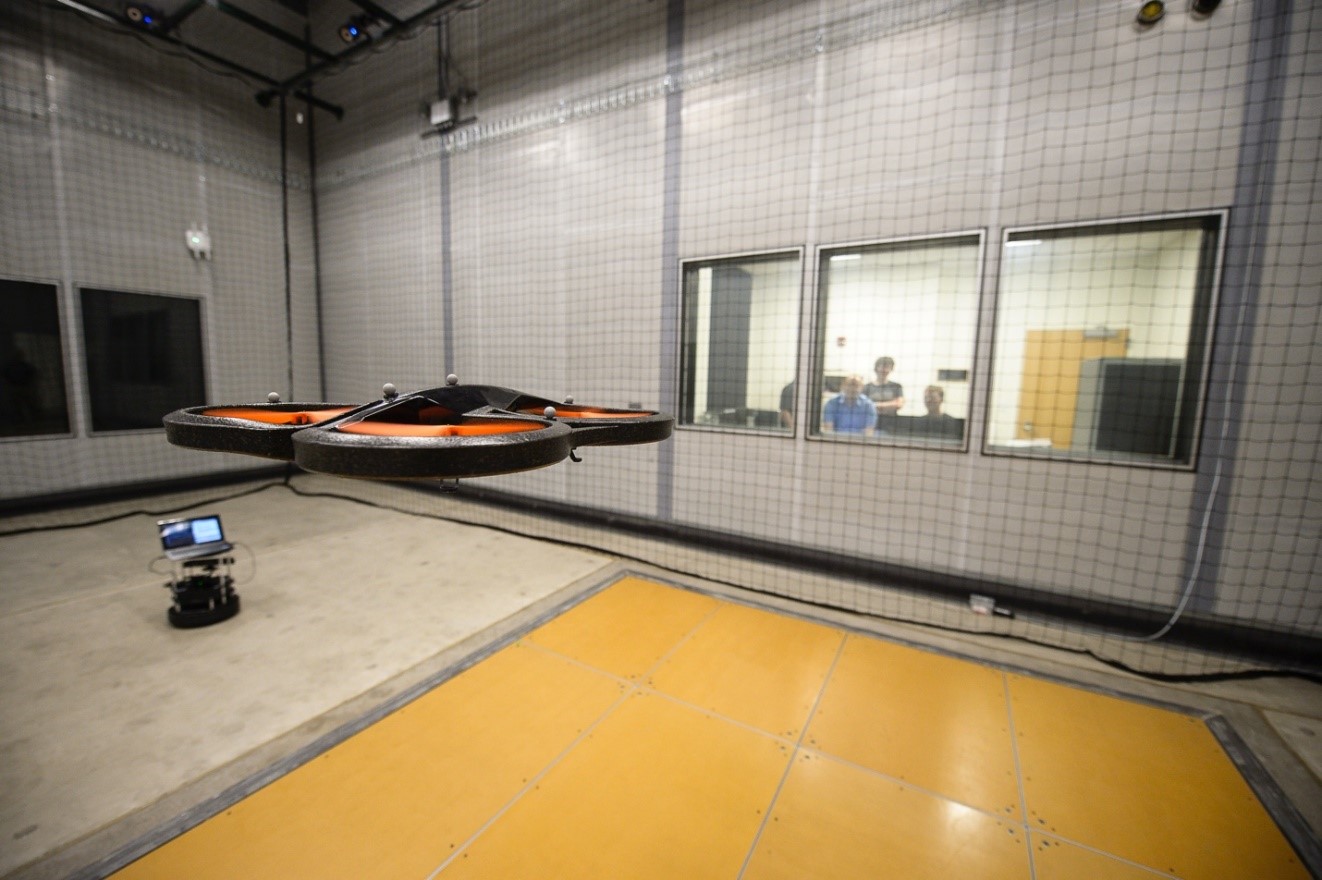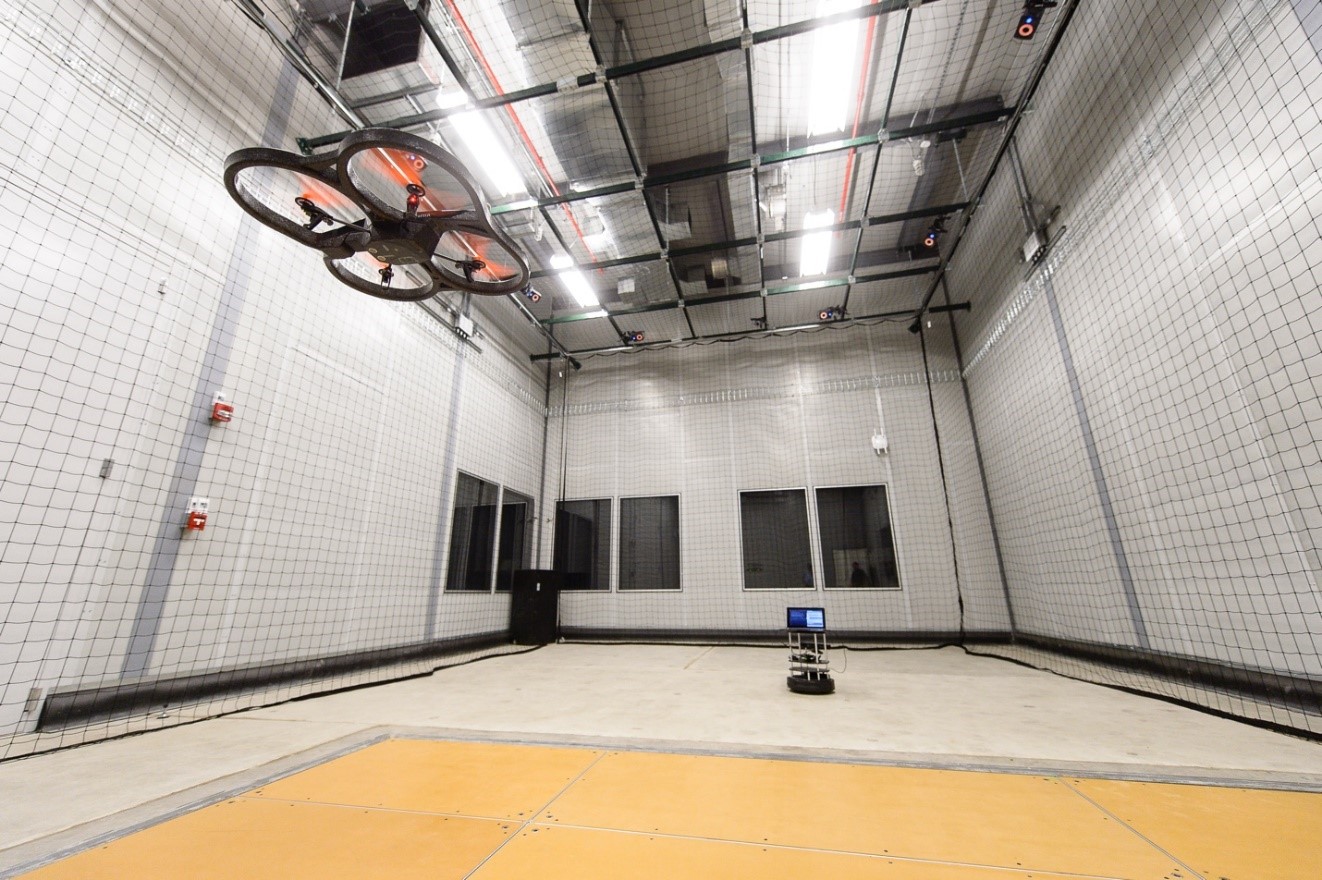Facilities / Current Assets
Purdue UAS Research and Test Facility, Purdue University Airport
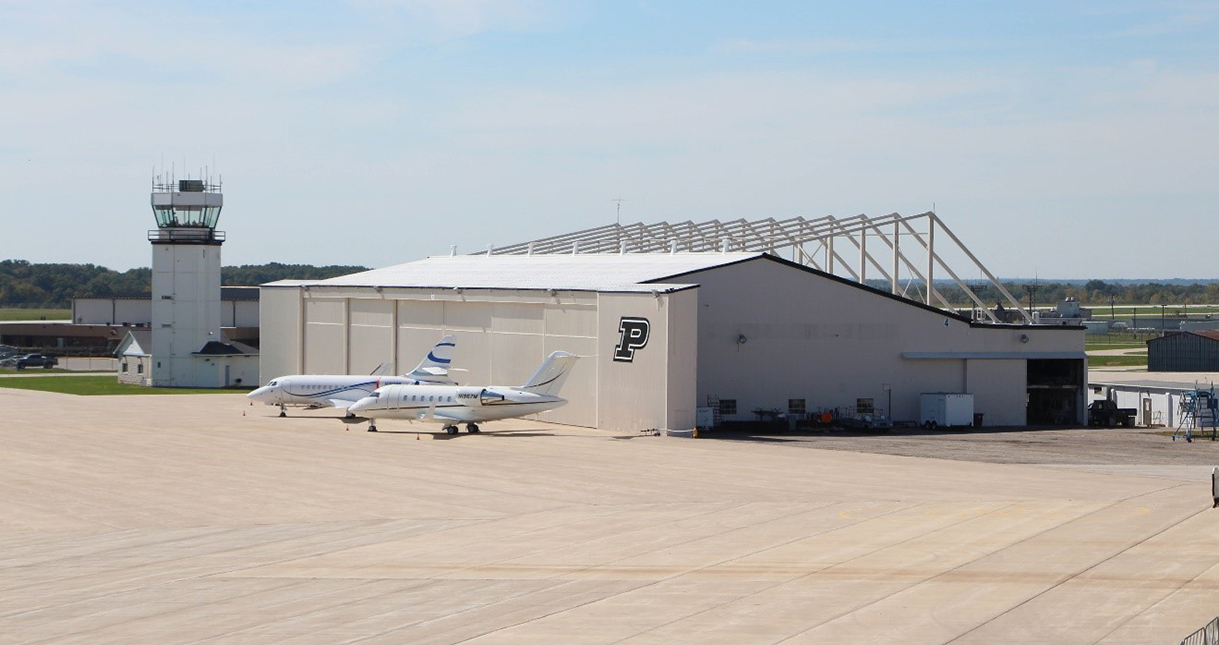

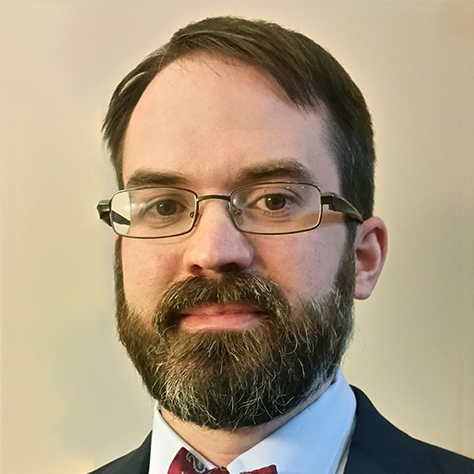
The Purdue UAS Research and Test Facility houses the largest indoor motion-capture environment in the world with dimensions of 160'x100'x30' and a total volume of 480,000 ft^3. The motion-capture system provides ground truth data for algorithm development and enables virtual and augmented reality. The size of the facility is critical for supporting high speed flight of rotary and fixed-wing UAS that previously could not be adequately studied in a motion-capture environment. Additional equipment facilitates study of autonomy including: AI and machine learning, UAS swarms, precision navigation in GPS-denied environments, signal jamming/cyber threats, and harsh environmental conditions such as high wind. In addition, the Purdue UAS Test-facility is located at the Purdue Airport; and a potential extension of the facility will include a UAS runway.
James Goppert
- Managing Director, Purdue UAS Research and Test Facility
Joint Transportation Research Program Lab Space in Hall for Discovery and Learning (DLR 104)
Provides researchers and students with traffic signal controllers and equipment for conducting probe vehicle data and CAN bus experiments. The lab includes garage space necessary for staging field site visits and modifying research vehicle instrumentation, as well as space for poster sessions and engagement opportunities. It was recently used for the Ford E-Scooter deployment on campus.
This semester, the #Purdue Lyles School of Civil Engineering added the one-credit Smart Mobility class. In it, students learn about the evolving future of transportation engineering. #SmartMobility #AutonomousVehicles #ConnectedVehicles #infrastructure pic.twitter.com/qPFkii6jBf
— Lyles School of Civil Engineering (@PurdueCE) October 19, 2018
NEXTCAR Lab Space, 2813 Park East Boulevard, Suite E-1, Lafayette, IN
8000 sq ft of shop space + 2000 sq ft of office space for the NEXTCAR/JTRP class 8 truck efforts

Harold Michael Traffic Operations Laboratory, CIVL 1122
Provides students with state of the art traffic signal controllers and equipment for conducting probe vehicle data collection, aircraft operations counts, and time lapse photography. The laboratory also has real-time traffic feeds from the Indiana Department of Transportation and the Purdue Airport that are used for "big data" analysis research. Students using the laboratory work closely with state and local transportation colleagues on solving applied traffic engineering problems.
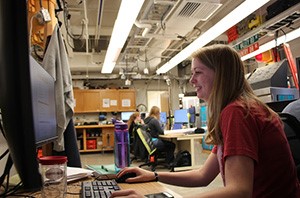
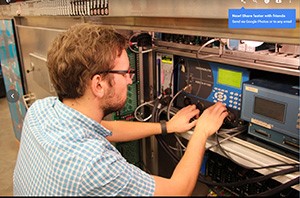
Mobile Mapping Vehicles
Mobile mapping vehicles are used to create high fidelity three-dimensional maps to assist transportation agencies in preparing their infrastructure for the next generation of connected and autonomous vehicles.

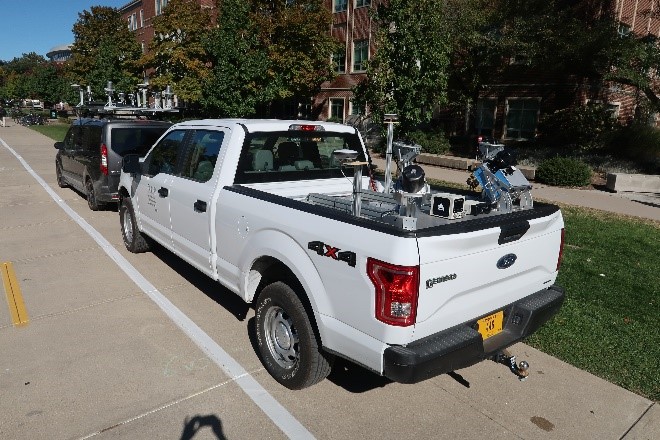
PBE Lab@ Herrick Labs
The unique multi-user Perception Based Engineering (PBE) lab facility at the Herrick Laboratories is for autonomous aerial and ground robot testing. This lab is a 43’ x 28’ x 20’ semi-anechoic space, equipped with a state-of-the-art motion capture system consisting of twelve Vicon T160 cameras and retractable netting and a separate control room. The system is set up for the simultaneous motion tracking and control of both multiple UAV and ground robots. The room is also vibration isolated. Additionally, the lighting, temperature (55F-85F), humidity (20% to 80%) and sound can be finely controlled, thus simulating various types of environments.
